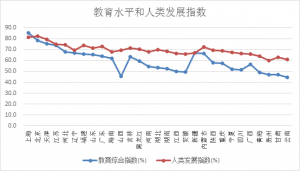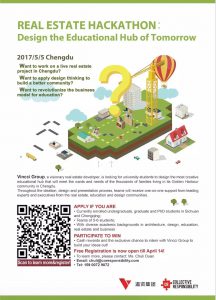
Source: Southwest University
Currently, compared to the rural areas, cities in China have clear competitive advantage in education resources. Schools in urban cities have more experienced teachers, better facilities and equipment as well as a better-developed curriculum. However, these abundant education resources in urban cities are not allocated evenly. Children can only attend schools in their neighborhood, which means their house is in close proximity to their school.
This triggered sky-high prices of houses near top schools.
A bungalow near to Beijing No.2 Experimental Primary School can be sold at the price of 400,000 yuan/square meter. To send their children to top schools, parents spend a large portion of their family’s savings to buy a “school district property”, or force their children to attend various training courses to potentially become the top 1% of students that enrolls into top schools. Education, is now a pain point of many Chinese parents.
Since education is a key decision factor for many tenants, the real estate industry is now transforming their community development model to provide better education resources to attract tenants.
A couple of examples highlight this:
- Taoyuan Community (桃源居) brought Tsinghua Experimental Middle School, a top middle school, into their community to provide 7000 families with higher quality education;
- Shi Mao Corporation created the concept of a “A Photosynthesize Education Community” (光合教育社区). It aims to create an education ecosystem where everyone in the community is immersed in an educational atmosphere, soaking up knowledge just like how plants absorb sunlight for photosynthesis;
- Vanke’s V-learn educational center provides education for people of all ages and a family entertainment center;
- Gemdale Corporation’s education cloud plan, aims to develop the online and offline education for the community, to pique children’s interests and realize their potential and build stamina.
The forerunners of the real estate industry began to transform and upgrade, investing largely on the development of the community’s education.
Early efforts of the real estate industry initially gave hope to thousands of parents who dreamed of having access to high top quality schools and teachers at their doorstep, but there were many obstacles during the execution of these plans.
Some of them include securing the starting capital and the maintenance of students and teachers enrollment, which led to many projects closing down or pivoting away from their original mission. For example Shi Mao Corporation’s “A Photosynthesize Education Community”, despite efforts to develop the project, in Hefei, Hangzhou and Nanjing, the projects began to fail as the APP did not solve the pain point of the market.
For others, like our client Vincci, the process is shifting from using a traditional “build it and they will come” mindset to getting out into the community, leveraging the tools of human centered design to understand the needs of their communities, and then bringing together the solutions with partners.
In taking this path, critical to their success will be to answer several critical questions:
With that, we hope that you will consider joining this fantastic event. An event where students will be able to put into practice their academic theories, leverage their imagination, and bring a solution to the market that solves one of the most critical challenges China is facing!
In partnership with Vincci Group, we are hosting a hackathon to seek solutions for China’s education challenge.
We need you to provide insights, ideate and design the ultimate user experience and journey.

